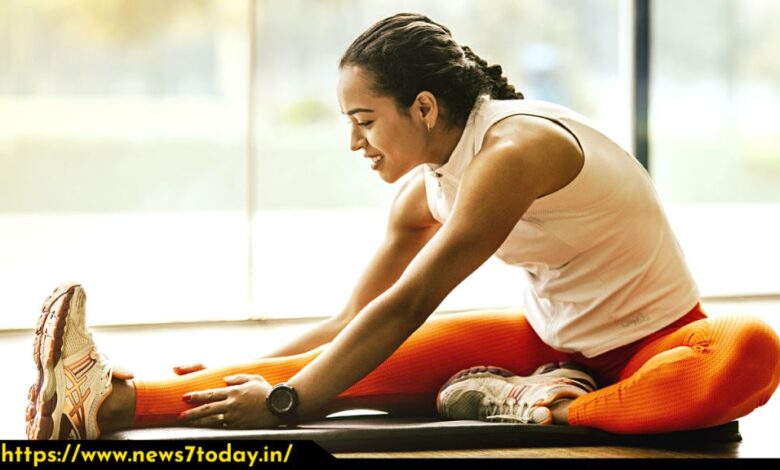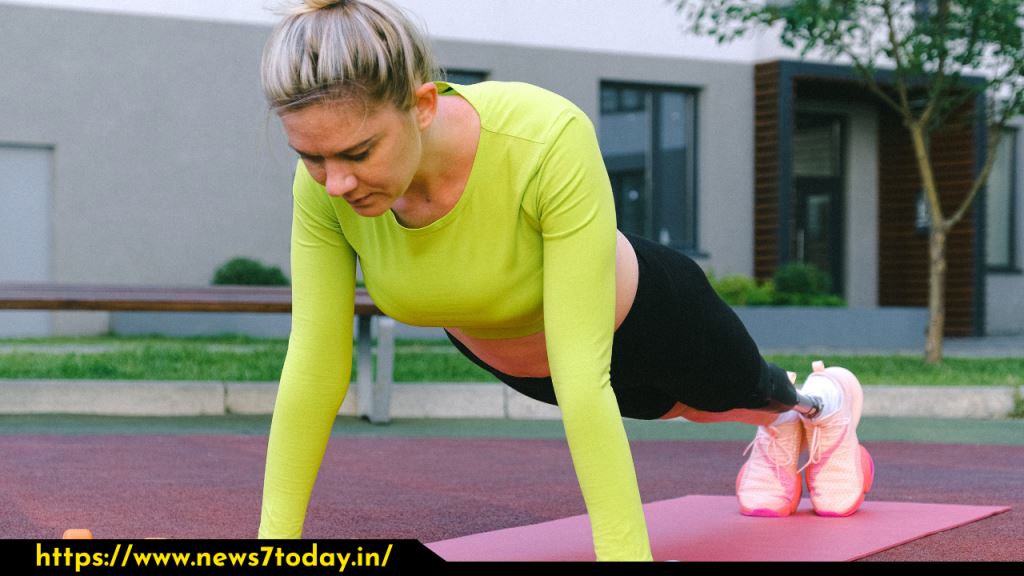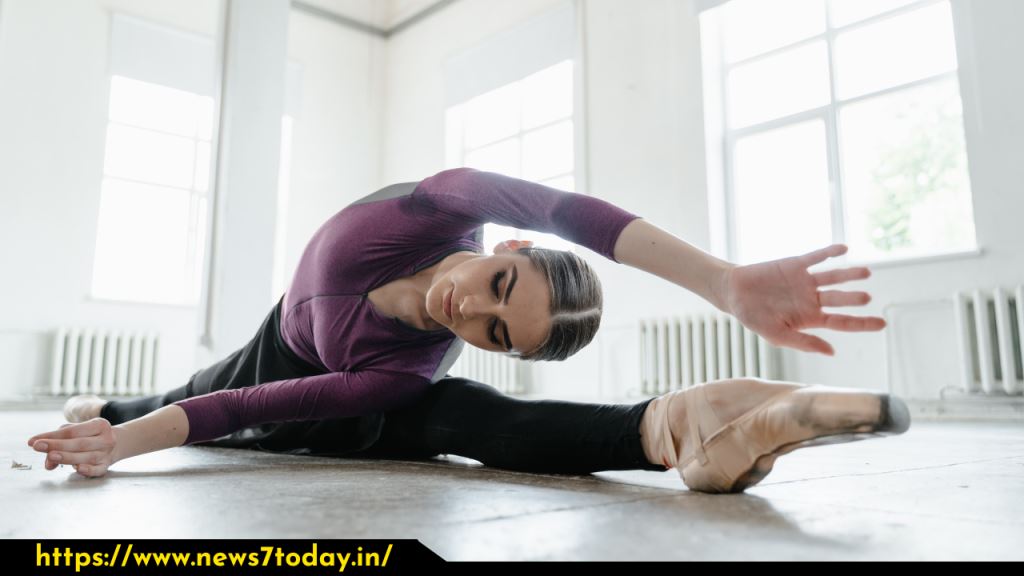Active Stretching: What It Is, Benefits, and How to Do It

Active stretching refers to a type of stretching in which the stretch is performed by the active contraction of the opposing muscle group. It is a form of dynamic stretching where the person uses their own strength and control to stretch the muscles, as opposed to passive stretching which involves external force applied by another person or an object. Active stretching helps to improve flexibility, range of motion, and muscle coordination.
What is Active Stretching?
Active stretching is a form of stretching in which you actively use your muscles to stretch a limb to its limits and hold it there. Unlike passive stretching, where you hold a stretch using an outside force such as a partner, wall, or prop, in active stretching, you are using the strength of your agonist’s muscles to stretch the target muscle. This type of stretching is often performed dynamically, where you continuously move in and out of the stretch.
Benefits of Active Stretching
Active stretching is a dynamic form of stretching that has become increasingly popular in recent years. This type of stretching has several benefits for both athletes and non-athletes alike. Today in this blog post, we’ll explore the benefits of active stretching and why you should consider incorporating it into your exercise routine.
Improves flexibility and range of motion: Active stretching helps to increase your flexibility and range of motion by gently stretching the muscles, tendons and ligaments. This increased flexibility can improve your athletic performance, reduce your risk of injury and enhance your overall physical function.
Increases muscle strength: Active stretching not only helps to increase flexibility but also helps to strengthen the muscles being stretched. By actively contracting and relaxing the muscle, you are building strength and improving the muscle’s ability to perform at its maximum potential.
Enhances athletic performance: Active stretching can improve your athletic performance by increasing flexibility, improving range of motion, and strengthening muscles. This can lead to improved power, speed, and overall performance, making it a valuable tool for athletes of all levels.
Improves posture: Poor posture can lead to a host of physical problems, including back pain, neck pain and headaches. Active stretching helps to correct poor posture by strengthening the muscles responsible for maintaining good posture and by stretching tight muscles that may be contributing to poor posture.
Reduces risk of injury: Active stretching can help to reduce the risk of injury by improving flexibility, increasing range of motion and strengthening the muscles. This can reduce the risk of strains, sprains and other types of muscle or joint injuries.
Types of Active Stretching
 Each type of active stretching has its own unique benefits, and the best type for you will depend on your individual goals and needs. Whether you’re an athlete looking to improve performance or a non-athlete looking to improve flexibility and range of motion, incorporating active stretching into your exercise routine can be a valuable tool for achieving your goals. If you’re new to active stretching, be sure to start slowly and listen to your body. If you experience any pain or discomfort, stop and consult a healthcare professional.
Each type of active stretching has its own unique benefits, and the best type for you will depend on your individual goals and needs. Whether you’re an athlete looking to improve performance or a non-athlete looking to improve flexibility and range of motion, incorporating active stretching into your exercise routine can be a valuable tool for achieving your goals. If you’re new to active stretching, be sure to start slowly and listen to your body. If you experience any pain or discomfort, stop and consult a healthcare professional.
Active stretching can be performed in a variety of ways, each with its own unique benefits. In this blog post, we’ll explore some of the most common types of active stretchings.
Ballistic stretching: Ballistic stretching involves using bouncing or swinging movements to force the target muscle to stretch beyond its normal limits. This type of stretching can be beneficial for athletes who need to improve their speed, power and overall performance, but it should be performed with caution as it can be risky if not done properly.
Dynamic stretching: Dynamic stretching involves moving a limb through a full range of motion, gradually increasing the speed and intensity of the movement as you go. This type of stretching is often performed before a workout or competition to help warm up the muscles and improve performance.
PNF (Proprioceptive Neuromuscular Facilitation) stretching: PNF stretching involves alternating between contracting and relaxing the target muscle, using the resistance of the agonist’s muscle to stretch the target muscle further. This type of stretching is often used by athletes and rehabilitation patients to improve flexibility and range of motion.
Isometric stretching: Isometric stretching involves holding a static contraction of the target muscle for a set amount of time. This type of stretching can be particularly useful for individuals who have difficulty with dynamic movements, as it requires less coordination and balance.
Active isolated stretching: Active isolated stretching involves holding a stretch for only 2-3 seconds at a time, using the strength of the agonist’s muscle to lengthen the target muscle. This type of stretching is often used by athletes and rehabilitation patients to improve flexibility, range of motion and overall physical function.
How to Do Active Stretching
Active stretching is a dynamic form of stretching that involves using the strength of your agonist muscles to stretch the target muscle. Here are the steps to perform active stretchings:
Warm-up: Start by warming up your muscles with some light cardio such as jumping jacks or jogging. This will help to prepare your muscles for stretching and reduce the risk of injury.
Identify the target muscle: Identify the muscle you want to stretch and position yourself accordingly. For example, if you want to stretch your hamstrings, lie flat on your back and extend one leg towards the ceiling.
Contract the agonist’s muscle: Contract the agonist muscle, which is the muscle that is opposite to the target muscle. In the case of the hamstrings, the agonist’s muscle is the quadriceps. Contract the quadriceps by pushing your heel towards the ceiling.
Relax and stretch: Once you have contracted the agonist muscle, relax and allow the target muscle to stretch. Hold the stretch for 2-3 seconds.
Repeat: Repeat the process of contracting and relaxing the agonist muscle 2-3 times for each stretch.
Gradually increase the stretch: As you become more comfortable with the active stretching, you can gradually increase the stretch by pushing a little further each time.
Finish with a cool down: Finish your active stretching routine with a cooldown of light cardio and static stretching.
It’s important to listen to your body when performing active stretching and to stop if you experience any pain or discomfort. If you’re new to active stretching, start slowly and gradually increase the intensity as you become more comfortable.
Common Mistakes to Avoid with Active Stretching
 Active stretching is a great way to improve flexibility, range of motion and athletic performance, but it’s important to perform it correctly to avoid injury and get the most out of your stretching routine. Here are some common mistakes to avoid with stretching:
Active stretching is a great way to improve flexibility, range of motion and athletic performance, but it’s important to perform it correctly to avoid injury and get the most out of your stretching routine. Here are some common mistakes to avoid with stretching:
Not warming up: Skipping a proper warm-up before stretching can lead to injury and reduce the effectiveness of the stretch. Make sure to start with light cardio or a warm-up that prepares the muscles you will be stretching.
Stretching too far too fast: Gradual progression is key when it comes to stretching. Pushing too far too fast can result in injury, so make sure to gradually increase the intensity of your stretches over time.
Holding stretches for too long: Active stretchings should only be held for 2-3 seconds at a time. Holding a stretch for longer than that can reduce the effectiveness of the stretch and increase the risk of injury.
Using momentum instead of muscle strength: Active stretching involves using the strength of the agonist muscle to stretch the target muscle. Avoid using momentum, such as swinging or bouncing, to stretch the target muscle as this can increase the risk of injury.
Neglecting to stretch the antagonist muscle: Active stretching should be performed on both the agonist and antagonist muscles for optimal results. Neglecting to stretch the antagonist’s muscle can result in imbalances and increase the risk of injury.
Stretching cold muscles: Stretching cold muscles can result in injury and reduce the effectiveness of the stretch. Make sure to warm up your muscles before starting your active stretching routine.
Ignoring pain: If you experience pain during active stretching, stop and consult with a healthcare professional. Ignoring pain can lead to injury and reduce the effectiveness of your stretching routine.
By avoiding these common mistakes and listening to your body, you can safely and effectively incorporate active stretching into your exercise routine and achieve your goals.
Conclusion
Active stretching is a dynamic form of stretching that involves using the strength of your agonist’s muscles to stretch the target muscle. It offers many benefits including improved flexibility, range of motion and athletic performance. To get the most out of stretchings, it’s important to warm up before starting, gradually increase the intensity of the stretch, and avoid common mistakes such as stretching cold muscles or holding stretches for too long.
Active stretching is a great addition to any exercise routine, but it’s important to listen to your body and stop if you experience any pain or discomfort. By following these guidelines, you can safely and effectively incorporate stretchings into your routine and achieve your fitness goals.
Frequently Asked Questions
Q: What is the difference between active stretching and passive stretching?
Active stretching involves using the strength of your agonist muscles to stretch the target muscle, while passive stretching involves using a prop or the help of a partner to stretch the target muscle.
Q: Is active stretching better than passive stretching?
Both active and passive stretching have their benefits and can be useful for different purposes. Active stretching is great for improving dynamic flexibility, while passive stretching is better for increasing range of motion.
Q: How often should I do active stretching?
It’s recommended to perform active stretching 2-3 times per week as part of a well-rounded exercise routine. However, the frequency of stretching may vary depending on your fitness goals and the intensity of your workout.
Q: What muscles can I stretch with active stretching?
Active stretching can be performed on any muscle group, but it’s important to choose a stretch that targets the muscle you want to improve.
Q: How long should I hold an active stretch?
Active stretches should be held for 2-3 seconds at a time. Holding the stretch for longer than that can reduce the effectiveness of the stretch and increase the risk of injury.
Read More – What Are 10 Tips for a Healthy Lifestyle?
10 Health Benefits of Eating Oats and Oatmeal
Best Guide 2023: Which Vitamins B Help Better Overall Health
How to Lose 10 Pounds in a Month: 15 Simple Steps
4 Perfect Eyebrow Shape Ideas For Round Face Shapes
Fannie Mae HomePath: What Home Buyers Should Know About it
What is the American Dream Downpayment Act / 529(b) Plan?




